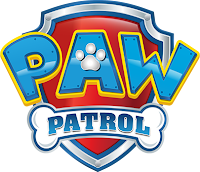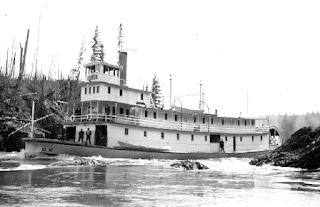“In the beginning was the Word, and the Word was with God,
and the Word was God.” John 1:1
“The Jesus whom I know as my Redeemer cannot be less than God.” Athanasius
As modern Christians it can sometimes be difficult for us to understand the early church fathers and their writings. Although they had mistaken thinking on certain issues they were, in fact, slowly discovering God’s truth as revealed in Scripture and to them we owe our orthodoxy of today – including the major creeds of our faith and our statements of faith in our individual churches. And of course God used many of these early believers to discover and determine what the actual canon of Scripture really was (that is to say what are the true inspired Words of God as opposed to mere writings of men).
One such early Church father who immensely helped in the forming of the canon of Scripture and in Christian orthodoxy itself was a man you may never have heard of – Athanasius of Alexandria. It can hardly be overstated how much God used this man to articulate and preach the doctrines of the Trinity and the Deity of Jesus Christ when the majority of the Church at the time was ambivalent if not outright hostile to these ideas. Here are 5 fascinating facts about Athanasius:
#1 His Origins
Not his Origens, his origins ( cheesy Christian history joke). Athanasius was born around AD 298 in Alexandria, a major city in Egypt that had been founded by Alexander the Great over 600 years earlier. Though nothing is known for sure of his early life, it is said that he was raised in a Christian home. There is also a story of how the current Bishop of Alexandria saw Athanasius playing as a youth with his friends in the ocean. He was pretending to baptize them - the Bishop later called them all to the ministry.
The name Athanasius means “Immortal” in Greek but his enemies often referred to him as “The Black Dwarf” as he was short and presumably dark-skinned – and not a little stubborn. However as his legacy endured he came to be known by other names such as “The Father of the Canon of Scripture” and no less than “The Father of Orthodoxy”. Recently, Trevin Wax, of The Gospel Coalition, named Athanasius as the most important Theologian in Church history (outside of the Bible writers).
#2 Arianism vs The Trinity
Arianism is named after a priest named Arius who was a contemporary ( though older) of Athanasius’. It is an age old heresy that teaches that Jesus Christ was made by God like a creature, and therefore not equal with God. Today this view is firmly held by the Jehovah’s Witnesses that come knocking at your door. Although this has been an obvious heresy for hundreds of years there was a time when it was the norm for the religious elite of the day – and that time was the time of Athanasius.
 |
| Fresco of the Council of Nicaea |
The Council of Nicaea was held near present day Istanbul in the year AD 325. It was summoned by the Roman Emperor Constantine I in order to clear up the question of Arianism vs the doctrine of the Trinity which claims that the Bible clearly teaches that God is one God yet in three persons and that each member of the Godhead ( The Father, The Son and The Holy Ghost) are equally God. Many years of controversy followed but ultimately the Creed formed at Nicaea and confirmed at the First Council of Constantinople (AD 381) won out and has laid the foundation for nearly every statement of faith that has come since in both Catholic and Protestant (including Evangelical) Churches ( See portion of Nicaean Creed below).
#3 Exiled 5 Times
Athanasius was present at the Council of Nicaea as a deacon to the Bishop of Alexandria and for the rest of his life he would battle unbiblical Bishops and Roman Emperors in the fight for the Deity (Divinity or Godhood) of Christ. Athanasius became the reluctant Bishop of Alexandria in AD 328. In total he would be exiled 5 times but the people of Alexandria always maintained that he was their Bishop and not the replacement sent by Rome. He would often flee out to the Egyptian desert where he had many Christian friends living as semi-isolated monks. One such man named Antony so influenced him that he wrote a biography of him that heavily influenced monasticism and later so convicted Augustine that he became a Christian soon after reading it.

In one instance his enemies tried to frame him for the murder of a Bishop named Arsenius – even producing a human hand as evidence. Things became awkward though when Arsenius was brought in by a deacon who had found him hiding in a monastery – he had both hands intact. Another story is told by Timothy Paul Jones (PhD) that when the Emperor Julian’s soldiers had caught up to Athanasius escaping on a boat they asked the man on the boat if he had seen Athanasius (not knowing who he was). Athanasius answered truthfully “Yes! He is just ahead of you and if you hurry you shall overtake him.” The Bishop escaped once again.
#4 His Fight for the Deity of Christ
Athanasius fought for the doctrine of the Trinity which meant he also believed the Holy Ghost to be one with and equal to God but his major life’s work was to defend the deity of Jesus Christ. He declared: “The Jesus whom I know as my Redeemer cannot be less than God.” Christianity Today records that: “To Athanasius this was no splitting of theological hairs. Salvation was at issue: only one who was fully human could atone for human sin; only one who was fully divine could have the power to save us.”
In his work “Contending For our All: The Life and Ministry of Athanasius”, Dr. John Piper reminds us: “There are doctrines in the Bible that are worth dying for and living for. They are the ground of our life. They are the heart of our worship. The divine and human nature of Christ in one person is one of those doctrines.” Athanasius perceived this same truth over 1600 years ago.
#5 His Legacy
To Athanasius we owe much. God chose him as a vessel through which to articulate, defend and preserve the truth of His Word. His defining work, “On the Incarnation” did much to uphold the deity of Christ and has been called a masterpiece by no less than C.S. Lewis (see excerpt below). Not unlike Biblical characters such as Moses, Elijah and Paul, he received God’s called and stood for the truth when almost no one else would. In fact, the phrase “Athanasius Contra Mundum” became common in his time – it means “Athanasius against the world”.
Dr. Piper says again: “This single-minded love for Jesus Christ expressed itself in a lifelong battle to explain and defend Christ’s deity and to worship Christ as Lord and God.” In the face of seemingly insurmountable odds and at the constant risk of his life Athanasius held to this doctrine. I thank God for men and women like Athanasius in the history of the Church.
“When He had been baptized, Jesus came up immediately from the water; and behold, the heavens were opened to Him, and He saw the Spirit of God descending like a dove and alighting upon Him. And suddenly a voice came from heaven, saying, “This is My beloved Son, in whom I am well pleased.” Matthew 3:16-17
“For in Him dwells all the fullness of the Godhead bodily…” Colossians 2:9
Sources & Further Reading:
For a more detailed account of Athanasius’ life and legacy and some clarification on his teachings please see John Piper’s “Contending for Our All: The Life and Ministry of Athanasius.” http://www.desiringgod.org/messages/contending-for-our-all
http://www.christianitytoday.com/history/people/theologians/athanasius.html
https://blogs.thegospelcoalition.org/ryanreeves/2016/05/09/who-was-athanasius-and-why-was-he-important/
Wikipedia
A Portion of the 325 version of the Nicene Creed:
“[We believe] in one Lord Jesus Christ, the Son of God, begotten from the Father, only-begotten, that is, from the essence of the Father, God from God, light from light, true God from true God, begotten not made, of one essence with the Father, through Whom all things came into being, things in heaven and things on earth, Who because of us men and because of our salvation came down and became incarnate, becoming man, suffered and rose again on the third day, ascended to the heavens, and will come again to judge the living and the dead…”
John Piper elaborates further on this Nicene Creed: “The key phrase, homoousion tõ patri (one being with the Father),was added late on the insistence of the emperor. It made the issue crystal clear. The Son of God could not have been created, because he did not have merely a similar being to the Father (homoiusion tõ patri), but was of the very being of the Father (homoousion tõ patri). He was not brought into existence with similar being, but was eternally one with divine being.”
From ‘On the Incarnation’ by Athanasius:
“For the Word, perceiving that no otherwise could the corruption of men be undone save by death as a necessary condition, while it was impossible for the Word to suffer death, being immortal, and Son of the Father; to this end He takes to Himself a body capable of death, that it, by partaking of the Word Who is above all, might be worthy to die in the stead of all, and might, because of the Word which was come to dwell in it, remain incorruptible, and that thenceforth corruption might be stayed from all by the Grace of the Resurrection.”

























